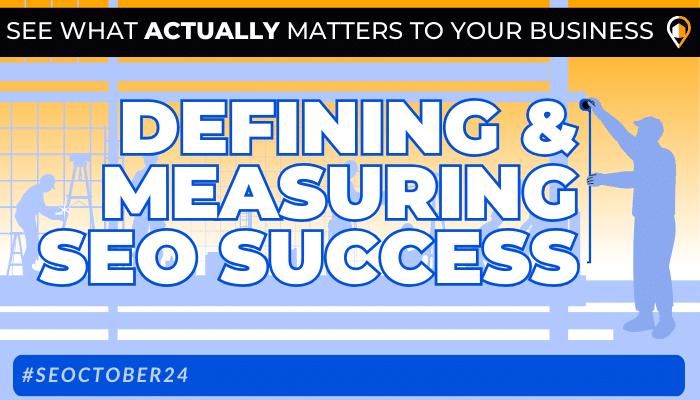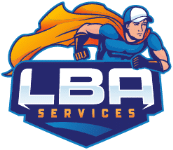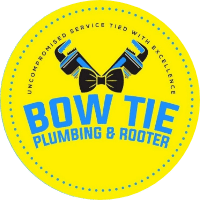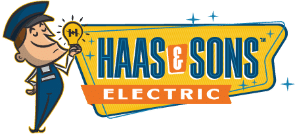Learn How To See What Actually Matters To Your Business
Many business owners think that SEO success is all about getting to the top of search results and driving traffic to your website. In reality, SEO success is more complex. What truly matters is whether your local SEO efforts align with your business goals. Success looks different for every business.
Let’s explore how to set the right goals and track meaningful progress. We’ll also look at real-world examples of businesses that achieved success by focusing on the right metrics.

What Does SEO Success Look Like?
Before you can measure your SEO success, you need to define what success means for your business. Here are 3 common goals a business might set:
SEO To Increase Website Traffic
If your goal is to increase awareness of your services, more website traffic may be the metric you focus on. However, it’s essential that the traffic is relevant to your business. Simply getting a lot of traffic doesn’t help if those visitors are from outside your service area.
By optimizing for local search terms like “air conditioning repair [town name],” you can increase relevant visitors, leading to more booked appointments.
SEO To Get Higher Page Rankings
For some businesses, improving rankings on Google can help them stand out in a competitive industry. However, focusing only on rankings without understanding the user intent behind the search term can be misleading.
Rankings are important, but they need to be paired with keywords that match what paying customers are searching for.
SEO For Increased Sales Or Leads
This is the ultimate goal for many businesses—getting more customers to contact you or buy your product. Optimizing your website for high-intent keywords can help generate more leads from your desired prospects.
Measuring SEO Success Beyond Rankings
Once you’ve defined what success looks like for your business, it’s time to measure it.
While rankings and traffic are important, there are other metrics that are equally, if not more, valuable.
Focusing on a wide range of SEO metrics can give you a more complete picture of how well your strategy is working. Here are key metrics to track:
➤ Website Traffic
Measuring traffic is important, but make sure you’re looking at the quality of traffic, not just quantity.
- An electrician optimized their website and saw a 300% increase in traffic. However, they noticed that most of the traffic was coming from blog posts about electrical safety tips, which didn’t lead to booked jobs.
They adjusted their strategy to focus on service-related pages, like “emergency electrical repairs,” and saw a significant increase in conversions.
➤ Conversion Rate
Your conversion rate is one of the best indicators of how well your SEO is working. This measures how many visitors are taking action—whether it’s filling out a contact form, making a purchase, or calling your business.
- A plumber ran a successful campaign to optimize their contact page for mobile users. As a result, they saw a 50% increase in form submissions, as more customers were able to easily reach out to schedule service.
➤ Bounce Rate
Bounce rate refers to the percentage of visitors who leave your site after viewing just one page. A high bounce rate can indicate that visitors aren’t finding what they’re looking for, or that your site isn’t user-friendly.
- A roofing company noticed that their homepage had a high bounce rate because visitors weren’t immediately seeing a clear call to action or service information. After revamping the design to showcase their services upfront, their bounce rate dropped, and inquiries increased.
➤ Local Search Visibility
For service-area businesses, ranking well in local search results is crucial. Tracking your visibility in Google’s “local pack” (the top 3 local results that appear with a map) can give you insight into how you’re performing in your area.
- A garage door company optimized their Google Business Profile listing, added photos, and encouraged satisfied customers to leave reviews. As a result, they moved into the local pack for the highly competitive term “garage door repair near me” and saw a boost in calls from local customers.
By monitoring these metrics and adjusting your strategy, you’ll be able to measure the effectiveness of your SEO and make data-driven decisions to improve your results.
Setting Realistic Expectations
One of the biggest challenges in SEO is that results don’t happen overnight. Greg Shadik, SEO Manager at LeadsNearby says, “A realistic SEO strategy should focus on long-term growth, not just quick wins.”
“Let’s say you’re a plumber in a major city. You’ve just launched a new website, and you want to rank on the first page of Google for high-demand terms like plumber near me. In a highly competitive market, it could take 6 months or more to achieve top rankings.”
However, during this time, you might start seeing improvements in secondary metrics—like better visibility in local search, increased traffic to your service pages, and more calls from nearby customers.
The key to success is patience and consistency. SEO is an ongoing process, and while it might take time to see big changes, steady, consistent progress means you’re on the right track.
The Importance Of Communication
Finally, a successful SEO strategy is a partnership between you and your SEO team. Your provider should be asking you questions about your goals, keeping you updated on progress, and explaining why certain changes are being made. The more transparent the communication, the better the results will be.
Remember, SEO isn’t just about rankings—it’s about working with your SEO team to build a strategy that aligns with your business goals, helps you track meaningful metrics, and delivers long-term success.
Ready To Start Measuring Real SEO Success?
If you’re ready to stop guessing and start tracking what really matters, it’s time to partner with a team that understands your goals. Whether you’re looking for more traffic, higher conversions, or improved local visibility, we can help you build a strategy that delivers real, measurable results.
Contact us online today to learn how we can help you define and achieve SEO success tailored to your business.
















